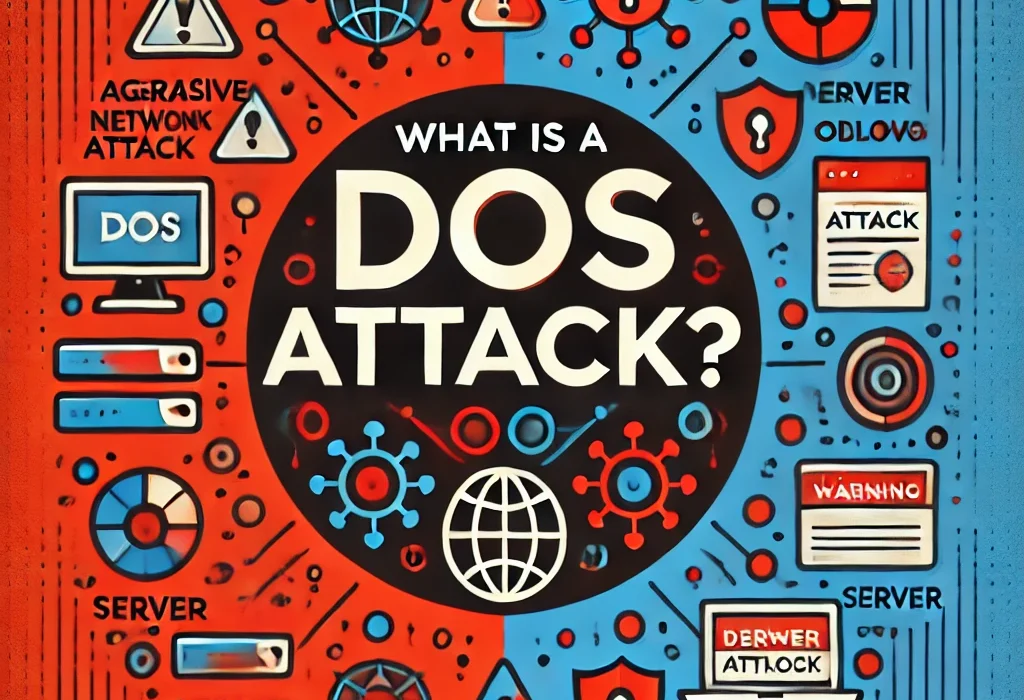In today’s digital world, cybersecurity threats are constantly evolving. One of the most common and disruptive types of cyber-attacks is the Denial of Service (DoS) attack. This article explores what a DoS attack is, how it works, its different types, and some basic tips for prevention.
What is a DoS Attack?
A Denial of Service (DoS) attack is a type of cyber-attack where the attacker overwhelms a server, website, or network with excessive traffic or requests. This overload prevents legitimate users from accessing the services or resources they need. Essentially, it denies the “service” part of the website, application, or network to legitimate users.
Unlike hacking attacks that aim to infiltrate a system, DoS attacks primarily aim to disrupt service and cause inconvenience, loss of revenue, or damage to the reputation of the targeted business or individual.
How DoS Attacks Work
DoS attacks exploit weaknesses in network infrastructure by overwhelming systems with excessive requests. In a typical scenario, an attacker uses one machine or network connection to flood the target with superfluous requests until it can no longer handle regular user requests. This renders the network or server temporarily unavailable to legitimate users.
Types of DoS Attacks
DoS attacks come in various forms, each with unique characteristics. Here are some of the most common types:
- Flood Attacks: This is one of the most basic types, where an attacker sends a large volume of traffic to a server to exhaust its resources. Some common methods include ICMP floods (Ping floods) and UDP floods, which exploit specific protocols by overwhelming them with requests.
- HTTP Flood: In this attack, the attacker sends numerous HTTP requests to a web server, which overwhelms it, causing it to slow down or crash. Unlike other flood attacks, HTTP floods are harder to detect because they resemble legitimate user traffic.
- SYN Flood Attack: This attack targets a network’s connection-handling mechanism. When a device requests a connection, the server responds with an acknowledgment (SYN-ACK), and the device is supposed to complete the handshake. In a SYN flood, the attacker does not complete the handshake, causing a backlog that prevents legitimate connections.
- Application Layer Attacks: These attacks focus on specific applications or services, aiming to exhaust the resources of targeted software, which can then lead to slowdowns and crashes. Application layer attacks are highly targeted and can be difficult to detect since they can mimic normal user behavior.
- Distributed Denial of Service (DDoS): DDoS is a more severe version of DoS. In DDoS attacks, attackers use multiple systems or a “botnet” (a network of compromised devices) to overwhelm the target. Because the attack is distributed, it is much harder to block or mitigate.
Impact of DoS Attacks
DoS attacks can have devastating effects on a business, individual, or organization. Here are some common impacts:
- Financial Loss: Businesses that rely on their online services can suffer significant financial losses if their sites or services go offline.
- Reputational Damage: If a business’s website is consistently down due to attacks, customers may start to lose trust in the brand.
- Productivity Loss: DoS attacks can prevent employees from accessing necessary resources, leading to a loss of productivity.
- Legal and Compliance Issues: Some sectors are required by law to maintain a certain level of service, and failing to do so could result in regulatory consequences.
How to Prevent DoS Attacks
- Use a Content Delivery Network (CDN): CDNs can distribute incoming traffic across multiple servers, which helps mitigate the impact of traffic-based attacks.
- Firewall and Intrusion Detection Systems (IDS): Firewalls can block unwanted traffic, and an IDS can detect unusual patterns that might indicate an attack.
- Rate Limiting: By setting limits on the number of requests an IP can make to the server within a specific time frame, rate limiting can prevent overwhelming traffic from single sources.
- Anti-DDoS Services: Some cloud providers offer specialized anti-DDoS services that monitor and manage traffic to prevent attacks. These services can be particularly useful for mitigating large-scale attacks.
- Network Monitoring: Constantly monitoring network traffic can help detect unusual patterns or signs of an incoming DoS attack. Early detection can be crucial in stopping an attack before it fully affects the system.
- Regularly Update Software: Vulnerabilities in outdated software can make systems more susceptible to DoS attacks. Regular updates and patches can help close these gaps.
Conclusion
Denial of Service (DoS) attacks are a serious cybersecurity threat that can cause significant harm to businesses, individuals, and organizations. Understanding the types of DoS attacks and implementing preventive measures can help mitigate their impact and protect critical systems from downtime. Staying informed about the latest threats and proactive in cybersecurity practices is essential in today’s connected world.

